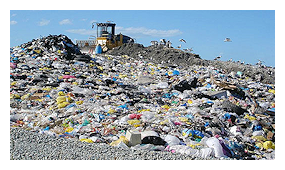Southern California
Conversion Technology
About
Reducing Landfill Dependency
With many landfills expected to close in the next decade, California is facing a waste crisis. As our population continues to grow, we must find solutions to our waste problem. Adoption of conversion technologies (CTs) is one step in a process that includes smarter consumer habits, more environmentally friendly packaging, and expanding recycling infrastructure.

CTs take pre-processed solid waste and generate usable resources like biodiesel and electricity.
By processing waste that would otherwise be sent to a landfill, we can reduce California’s environmental footprint.
The Los Angeles County Department of Public Works is actively working with municipalities and businesses from across the region to create a working demonstration project. When completed, the facility will be a world-class showcase for clean, cost-effective conversion technology.
Conversion technologies refer to a wide array of state-of-the-art technologies capable of converting unrecyclable solid waste into useful products, green fuels, and renewable energy, in an environmentally beneficial way.
- reduce greenhouse gas emissions and other criteria pollutants;
- reduce dependence on landfilling and imported fossil fuels;
- enhance recycling efforts; and
- exceed California's strict environmental standards.
The Los Angeles County Department of Public Works embraces the new “inverted” solid waste management paradigm which reverses the hierarchy by regarding landfills and transformation facilities to be final resorts, only after all other efforts have been exhausted.
In the new paradigm, the greatest amounts of waste are to be reduced, reused, and recycled. The materials remaining are then to be processed through alternative technologies, such as conversion technologies, to further extract beneficial uses from otherwise disposable materials.
Finally, any remaining materials, which should ideally constitute the least amounts of the waste are to be taken to transformation facilities, or disposed of at in-County and out-of-County landfills.


